Weaving Presence.
Bangkok
2023
Weaving Presence. Mapping Creative Thought, Ideas and More concluded the first part of Timothy‘s artist residency in August and September 2023 connected to the current research project Transient relations: towards a transindividual embodied research dispositive, a first step to understanding systemic sustainability and intercultural exchange through the lens of social science and embodied cognition.
In collaboration with: PTIS - Prem Tinsulanonda International, ARThailand Chiang Mai and Artist Residency Thailand
Concept and Idea: Timothy Nouzak
Artistic Documentation: Woraphon Aintayot
The research has happened within the framework of a two-part research residency in Bangkok and Chiang Mai, co-hosted by Chiang Mai University and ARThailand, where the focus was set on a guest lecture series that aimed to re-think social engagement and curation through the lens of performative practice. This focus also extended to a funded research project that Timothy is currently undertaking at the University of Applied Arts in Vienna. The idea of the guest lecture series was to share, dialogue, and contribute insights into the discourse on what performance and social engagement within art can be, and how they relate to oneself and current contemporary arts practices. The first part of the research residency culminated within the framework of 'Artist Residency Thailand (ART)', in collaboration with PTIS - Prem Tinsulanonda International and ARThailand in Chiang Mai. Here, the focus was on Dance and Embodiment as Catalysts for rethinking ways of knowledge production.

1. Dance and Embodiment as Catalysts for rethinking ways of knowing:
The first part of the studio seminar focused on intrinsically guided, physical movement practices that were accompanied by a shared mapping practice reflecting on epistemic dilemma of how one can articulate the nuanced relationship between the embodied experience of dance and the application of specific knowledge regimes and what insights this exploration might offer into the epistemic dilemma of how and why we tend to apply specific knowledge(s).
The first part of the studio seminar focused on intrinsically guided, physical movement practices that were accompanied by a shared mapping practice reflecting on epistemic dilemma of how one can articulate the nuanced relationship between the embodied experience of dance and the application of specific knowledge regimes and what insights this exploration might offer into the epistemic dilemma of how and why we tend to apply specific knowledge(s).
Engaging with objects on an aesthetic level involves both our senses and emotions, but it also seems to fundamentally be a cognitive process. This means that aesthetic engagement raises several questions related to the production of knowledge. For instance, we often assert that we have knowledge about art, and we value the insights of the debate stipulated through practice by expressing opinions about how a work has impacted us, and whether the thoughts, emotions, etc., it evoked were appropriate. Many people further have pointed out that one can learn from art and that it alters the perception of the world, influencing the way one understands and interprets it. There's a widespread belief that works of art can instill beliefs about the world that offer a form of knowledge that refrains from the ratio, something that Michael Polanyi asserts as tacit or embodied. However, what exactly can we know about art, and what can art teach us? Does art convey propositional content similar to what we require for other types of knowledge claims? These are the questions that shape the debate on whether art can be considered cognitive and in what way, and that was the starting point for our shared studio seminar.
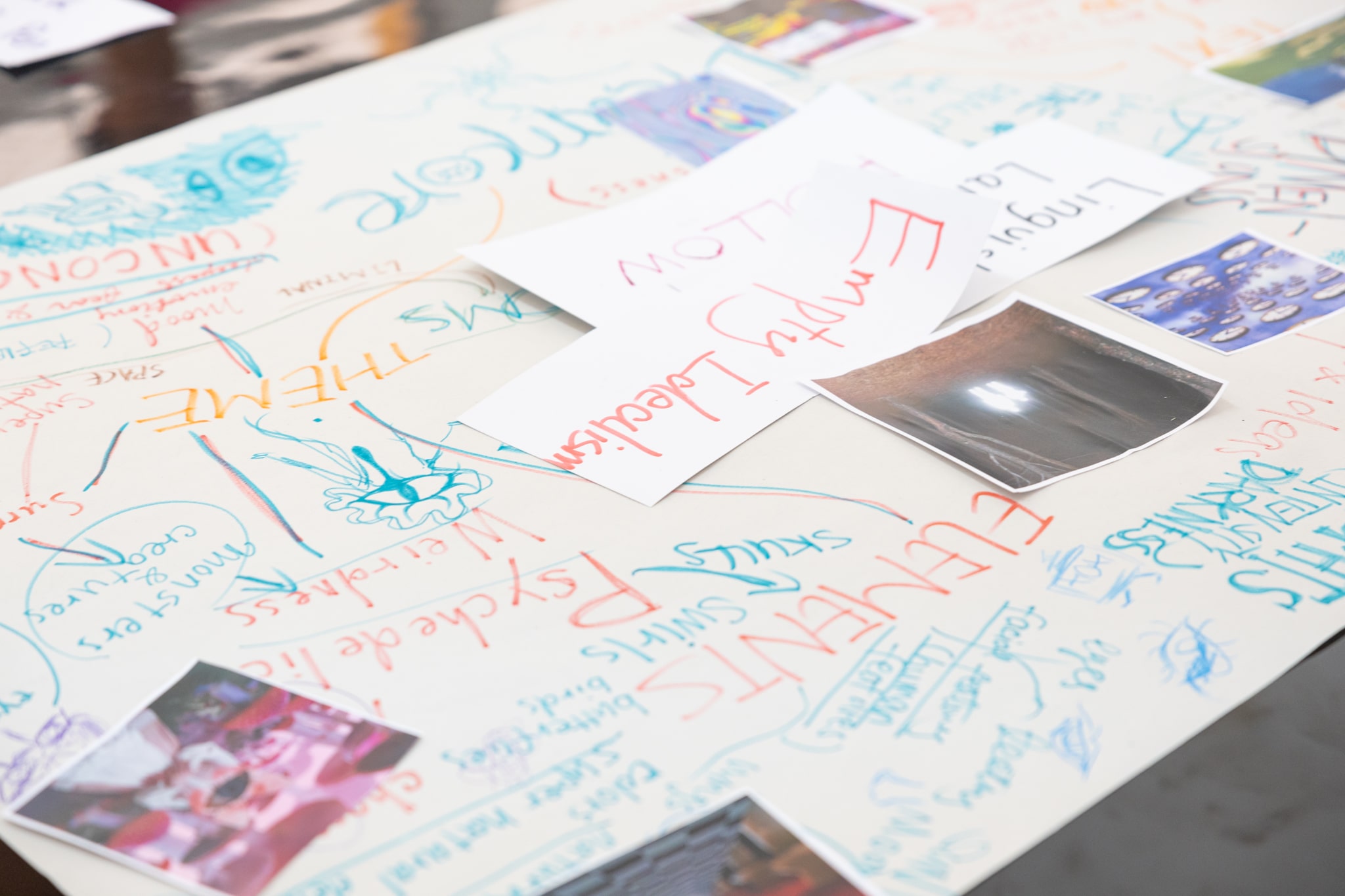


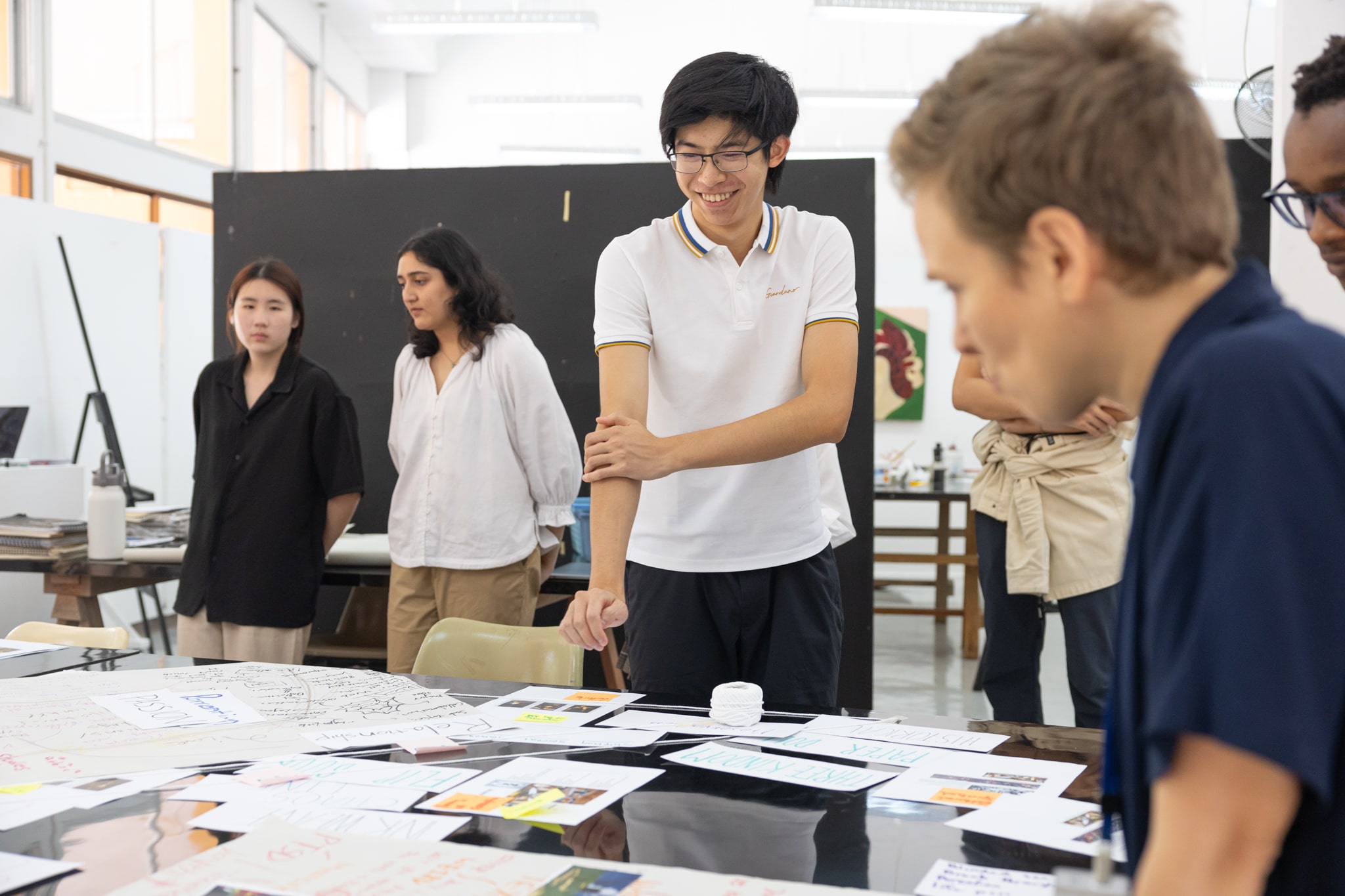
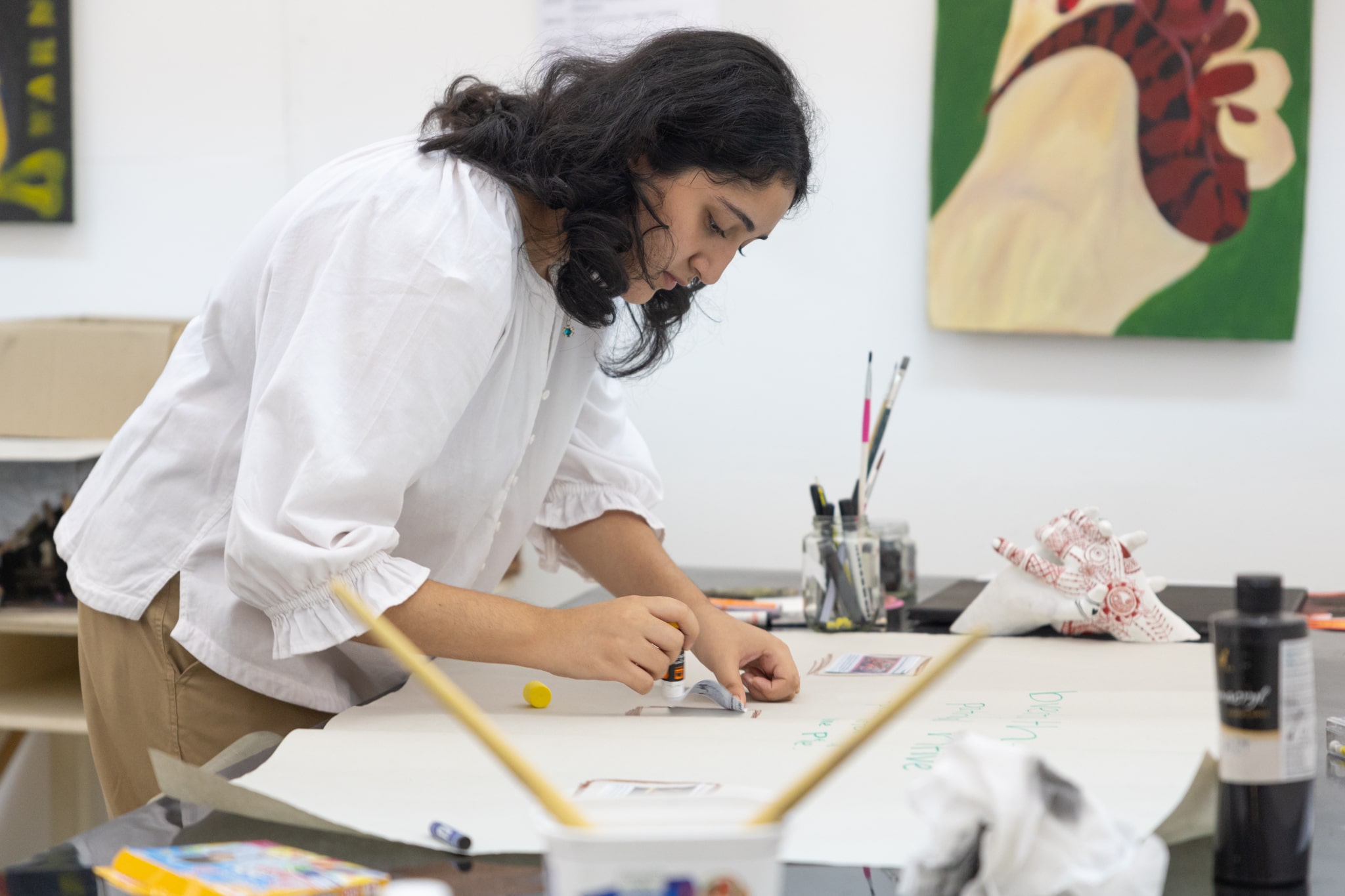
Aesthetic Regimes and the Production of Knowledge:
How does arts-based research differ from more conventional anthropological research approaches?
How does arts-based research differ from more conventional anthropological research approaches?




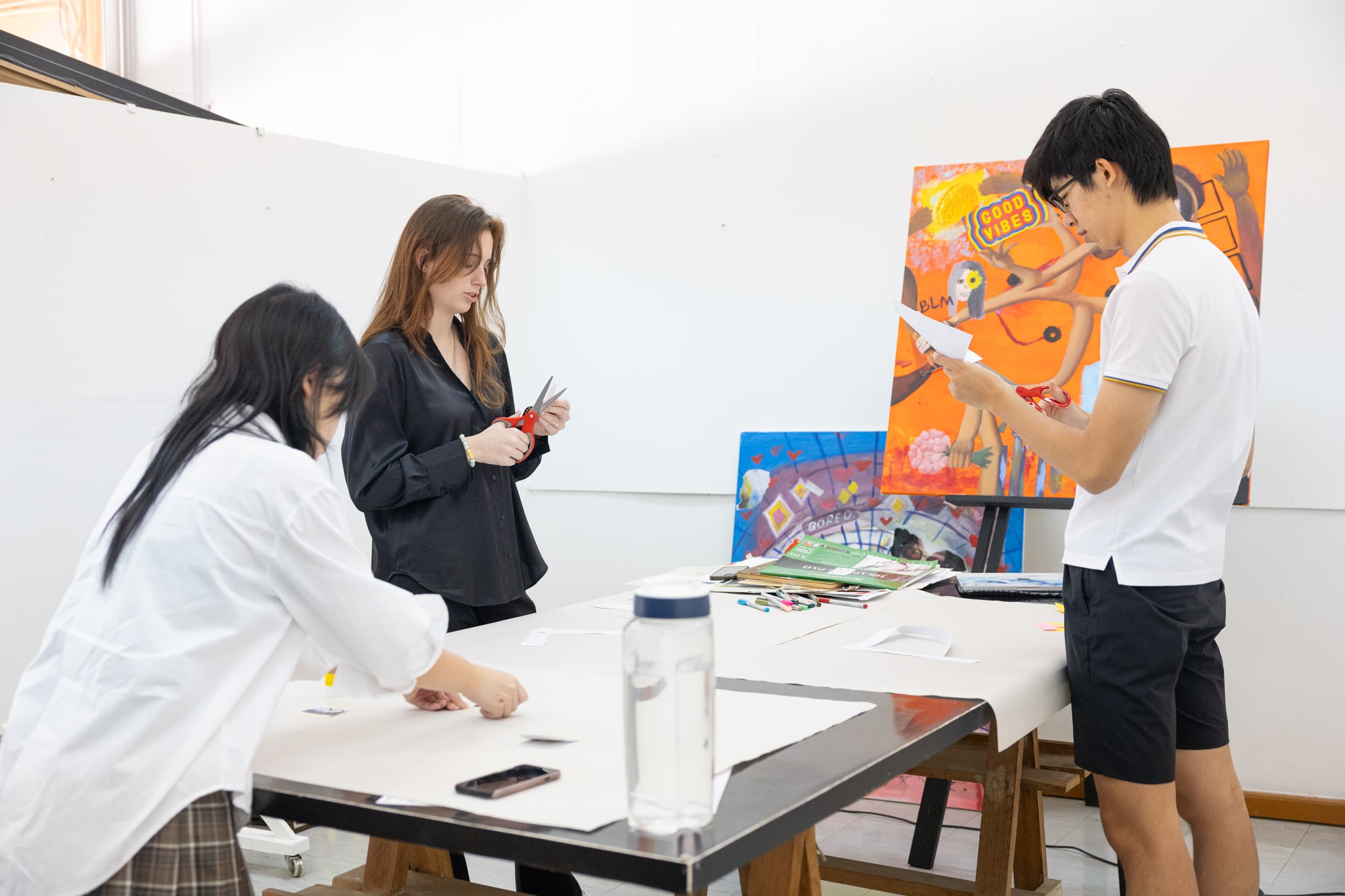

The seminar generated multifaceted ideas, ranging from naming different forms and methods of how knowledge can be rethought, towards clear concepts that reflect on social and ethical ramifications of knowledge within transcultural research contexts. Within a typical seminar session, we engaged in the following activities:
1.) Recap, Map, and Collective Warm-up of Our Senses:
Given that participants' ideas often seemed to dialogue in content, we collected them and created a new map. With minimal explanation, we delved into sharing each post-it note, collectively deciding where to place it spatially. This process was followed by physical movement practices that connected to the warming up of our bodies and senses. The former served as a brief recap, reiterating important words and concepts (such as transdisciplinarity, non-verbal communication, the working through of cultural biases, etc.), by connecting them collectively. Physical practices helped us to embody the mentioned concepts, enhancing a deepened understanding of knowledge transmission.
2.) Four Subgroups: Reflective Mapping Based on Specific Questions:
Later on, the participants were divided into four subgroups to embark on an experiential creative mapping process. Building on my inputs and the collective map, they created more detailed maps that specifically addressed one of the following questions:
A.) How can we access core beliefs within a social community context? B.) How do performative practices and artistic work help us to understand knowledge(s) related to larger societal issues better?
3.) Sharing Created Maps:
Each group briefly shared their perspective, prompting other group members to join the conversation, and thereby encouraging thought, dialogue, and shared exploration. These conversations have led to three contextual formats that were explored within differnent work settings:
Option 4. "Meta - Map":
This process leverages maps for complexity reduction. We employed reflective rounds where the map was juxtaposed each time by layering and reorganizing contents to further deduce, filter, and compartmentalize. The groups were then instructed to examine another created map (reflecting the same A/B question from earlier) and adopt a "colored lens" on how they intended to perceive the map:
- Lens 1: Dimension connected to choreography, movement, and body-based agency, exploring how the body, performance, and performativity play a role within the map.
- Lens 2: Dimension related to a socially engaged approach, emphasizing existence, behavior, knowledge, culture, ethics, and value systems, contemplating how arts-based research might differ from more conventional anthropological research.

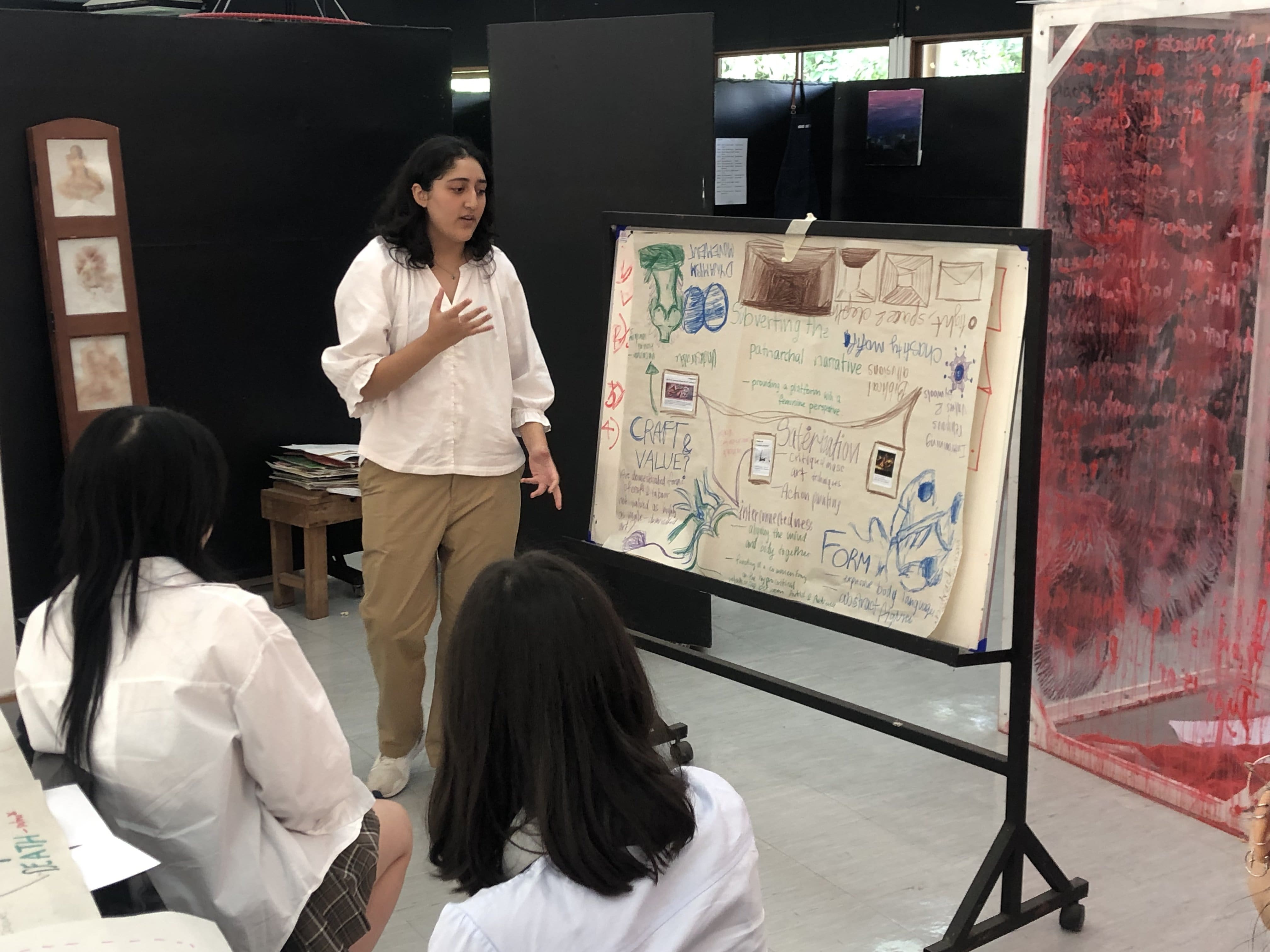

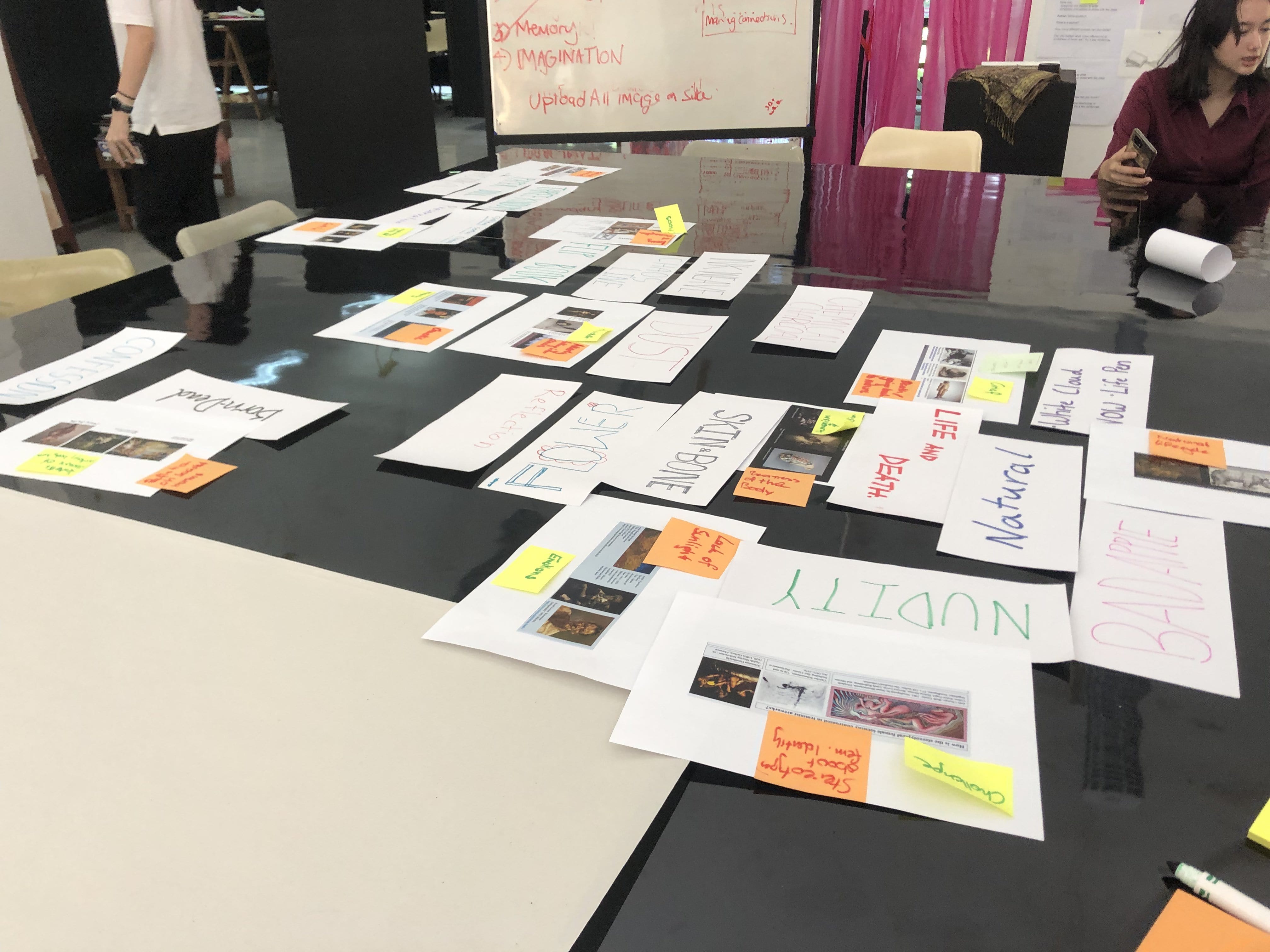
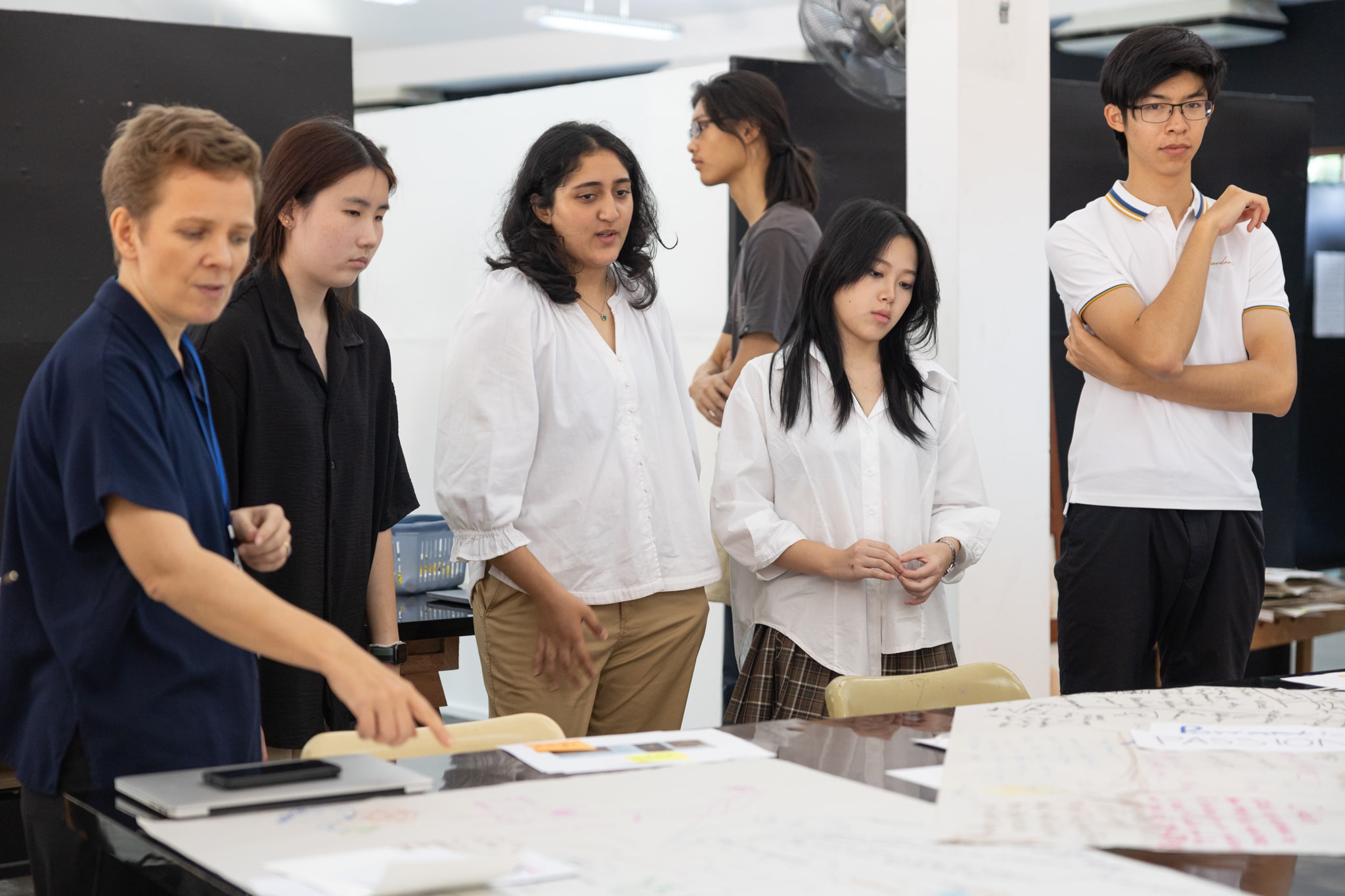
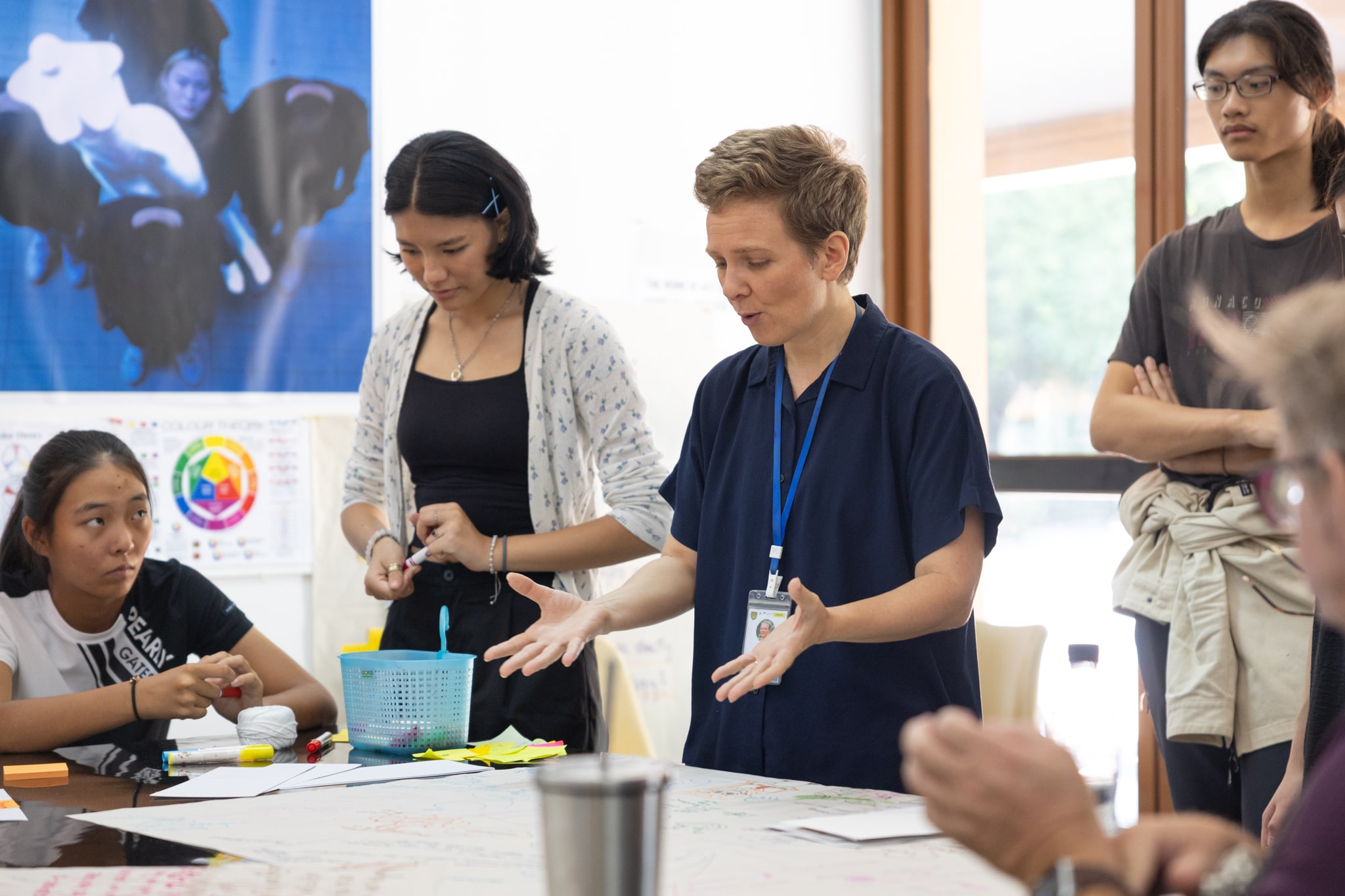

Option 5. "Blowing up the Map" - a performative reflection of the Map:
Addressing students' desire for more performative elements, in one setting, we adopted a task that, despite time constraints and limited experience with performative dialogic score structures, proved valuable. Participants extracted a concept from the map, wrote it on a large sheet of paper, and then positioned themselves in relation to it in the physical space. Each person explained why they had chosen their position relative to others, fostering a discussion about spatial relationships that led to a shared movement score.
Option 6. "Open Lecture Format":
Lastly, certain groups expressed a need for a more closely moderated setting where they could openly ask questions and engage in dialogue concerning transdisciplinarity, non-verbal communication, addressing cultural bias, understanding cultural sensitivity, and the role of investigators or “outsiders” in community projects. The moderated conversations have served as the starting point for a personal writing component.



© special thanks to



© photo by Woraphon Aintayot / PTIS